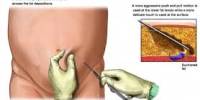A new vaccine platform refers to a novel approach or technology used to develop vaccines, which differs from traditional methods. These platforms can include mRNA, viral vector, protein subunit, and DNA-based vaccines, among others.
To many, EV stands for “electric vehicle.” It serves as a shorthand for a different nanoscale vehicle that could facilitate the production and distribution of vaccinations globally, according to researchers at Harvard University and the University of Nebraska–Lincoln.
A Harvard-Nebraska collaboration has created a vaccination platform that could reduce some engineering difficulties, storage requirements, and adverse effects of vaccines that fight HIV epidemics and the COVID-19 pandemic. This platform makes use of one of the human body’s natural cargo carriers. In preliminary mouse studies, the team’s approach also demonstrated promise, increasing antibody production against HIV and boosting survival rates against influenza.
“We believe that this delivery system can enhance the immune response, particularly by inducing antibodies against viral infection,” said Shi-Hua Xiang, associate professor of veterinary medicine and biomedical sciences at Nebraska.
The human immune system has historically responded to vaccines by recognizing weakened or inactivated viruses and producing antibodies and cellular reinforcements that can recall and later fend off infectious variants of those viruses.
However, many vaccines now are made up of the lockpicking proteins that coat the surfaces of viruses, also known as antigens, which the immune system perceives as a threat to enter cells for reasons of safety and efficacy.
We believe that this delivery system can enhance the immune response, particularly by inducing antibodies against viral infection.
Shi-Hua Xiang
However, the surface-level antigens in vaccines must adopt the same three-dimensional poses they strike on viruses themselves in order to promote identification and immunity. Unfortunately for vaccine researchers, getting antigens into their natural configurations can be challenging.
For instance, the envelope that protects the genetic material of HIV also helps to maintain one of the important proteins that protrude from it. It may take time and money to splice specific genes into the protein’s DNA or partner the protein with a surface that is comparable in order to persuade it to maintain that structure after being uprooted from its viral basis.
Throughout his more than 20 years of work on HIV vaccinations, Xiang frequently performed those feats of protein engineering on his own. Then, in September 2017, Harvard’s Quan Lu visited Lincoln to give a seminar on a new type of extracellular vesicle: a nanoscopic particle, encased in a double layer of lipids, that ferries nucleic acids and other freight around the body.
Xiang, who attended Lu’s talk, knew that lipid bilayers form the membranes of not just EVs and cells, but many viruses, too. The budding process that generated Lu’s EVs also resembled that of viruses. And EVs were roughly the same size as their viral counterparts. Those similarities got Xiang thinking.
“My thought,” he said, “was that maybe we could collaborate on a study.”
Alongside some colleagues, Xiang and Lu were soon looking into whether the latter’s new EV might recruit viral antigens to its surface, lock in their poses, and ultimately stimulate immune responses to them.
The researchers began by exposing the EV to an influenza protein that has become the focus of the search for a universal flu vaccination due to its prevalence across numerous different flu strains. One specific EV domain not only attracted and merged with the flu antigen, but it also encouraged the development of more EVs than would be expected.
Encouraged, the team put its resulting EV to the test in mice. While mice facing the flu without a vaccine survived less than 30% of the time, those given three doses of the EV-based vaccine survived in 60-70% of cases.
The team discovered that the vaccine was causing large amounts of antibodies, which then bound to and neutralized the flu virus. The development of neutralizing antibodies in the serum of mice given the vaccination again showed promise when the researchers substituted an HIV protein for the flu antigen.
According to Xiang, the platform may even have a few advantages over mRNA vaccines, which are effective against the SARS-CoV-2 virus that causes COVID-19 and work by telling cells to produce antigens. Compared with the mRNA vaccines, which are shipped frozen and can be prone to breaking down over time, an EV-based vaccine will offer more stability and should remain viable at higher temperatures, he said.
Those advantages, Xiang said, could eventually push the EV platform to the forefront of vaccine design, production and delivery.
The findings are published in the journal Science Advances.
















